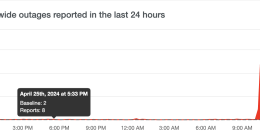

Though PFASs remain prevalent in the apparel industry, progress is being made to reel them back. Philip Tavell is an ex-professional skier and Outdoor Category Manager for Helly Hansen. He’s spent the last four years leading a small team to develop the new Lifa Infinity Pro fabric, which comes to market later this year.
“The material is kind of simple, at least in theory,” Tavell says. “Both the fabric and yarn are hydrophobic, meaning they won’t absorb water. We did this without any chemical treatment. The woven structure is designed to bead water, just like a coating. This provides a consistent, durable, and dry surface.”
Because chemicals wear down much faster than fibers, the jacket keeps its inherent waterproof properties longer than rain shells treated with PFASs. The downside is that the garment has almost no stretch, making it useful for resort skiing, sailing, and hiking, but less great for rock climbing, cross-country skiing, or activities that require more agility.
Collaborations are blooming between different companies in the industry. Tavell says Helly Hansen is considering open-sourcing the technology its developed. “A lot of people internally agree that we should,” he says. “We already have had requests to license it.”
Gore, the maker of Gore-Tex and a leading supplier of waterproof fabrics, is also working to eliminate PFASs from its products. In 2017, the company set internal goals for removing PFASs from all consumer products. Despite early setbacks, it’s aiming to be entirely PFAS-free by the end of 2023.
“We began exploring DWR alternatives in 2012, working with chemical suppliers from around the world,” says Jon Hammerschmidt, who works on sustainable fabric initiatives for the company. “A few years ago we brought the project in-house, to develop our own PFAS-free coating and membrane technology.”
Hammerschmidt respects the complexity of the problem, acknowledging that a waterproof jacket needs to simultaneously stretch, breath, and keep water out. These qualities are often at odds with each other. Once this cocktail is mastered, the next hurdle is durability. Extending the life of a garment has a significant impact on its environmental footprint. Lastly, any potential solution needs to be able to be produced at scale, since Gore supplies materials to many apparel companies.
“When we released our first DWR free of harmful PFAS in 2018, most brands were excited, but they needed time to confirm what it could and couldn’t do,” Hammerschmidt says. “Over half of our outdoor products today use this formula, but it doesn’t replace all rain shells. That’s the challenge we’re trying to solve now.” Gore is now partnering with teams outside the company, including academic researchers, crowdsourcing efforts, and partner companies.
One corporate partnership is with Mountain Hardwear. Steve Adams is a product manager there. “This spring, we moved 80 percent of our jackets to a PFAS-free DWR, after a year of field testing,” Adams says. “The last challenge is the high-end performance stuff.”
Another of Gore’s partners, Norrona, has made similar progress; 72 percent of its DWR products are currently PFAS-free. “We’ve been working towards a goal of becoming completely free by the end of 2020, a target we set with Gore-Tex,” says Brad Boren, Norrona’s director of innovation and sustainability. “Unfortunately, neither of us are going to hit that milestone, primarily because certain performance fabrics just aren’t there yet.”
The research team at Norrona took a unique approach. It developed new fibers from renewable biomass resources like plant fibers that are softer and stronger than the fibers derived from fossil fuels which make up most synthetics on the market today. Boren credits his team’s progress to collaboration with other corporations and nonprofits.







